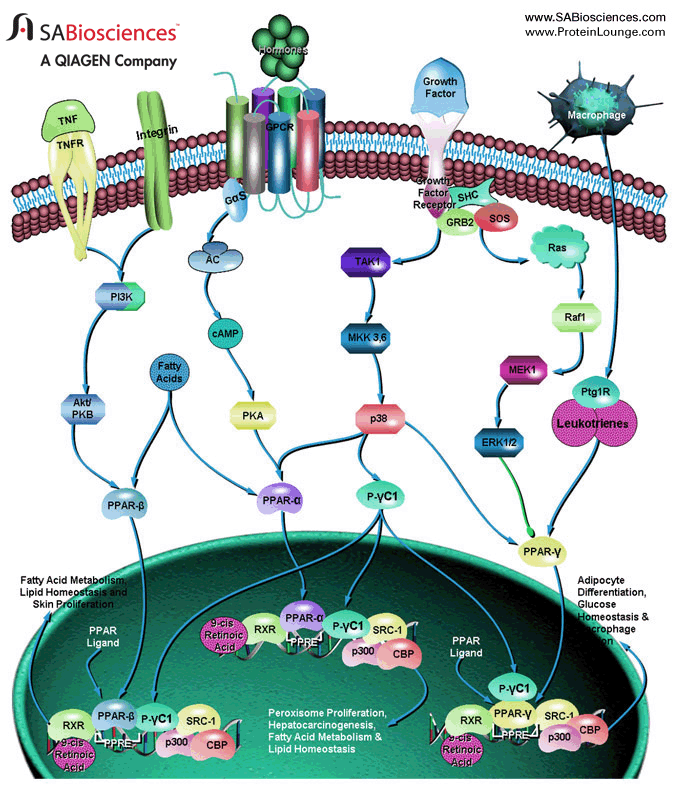In molecular biology, what's the meaning of the terms "downstream signaling" and "upstream signaling"? What's the difference between them?
-
$\begingroup$ You are thinking of transcription factors? Or is it more signal transduction? $\endgroup$– Chris ♦Commented Feb 24, 2014 at 13:29
-
$\begingroup$ @Chris well, I'm not sure. I presume that one uses the same terms in both contexts because they have something in common, right? I'm looking for an explanation of these terms in their more common uses. $\endgroup$– a06eCommented Feb 24, 2014 at 13:36
2 Answers
It simply means after and before with respect to the flow of information in a given pathway. For example, consider this schematic representation of a pathway:
TF1 ==activates==> gene1 ==produces==> Kinase1 ==phosphorylates==> ProtA
In this schema, Kinase1 is downstream of TF1 and upstream of ProtA. Or, to take a classic example (source):

MEK1/2 is downstream of Raf and upstream of ERK1/2.
-
2$\begingroup$ Perhaps worth pointing out that there is a flow of information in a signalling pathway so at any point in this flow you can look upstream, to where the information came from, or downstream to where it is headed. That's where the metaphor comes from. $\endgroup$ Commented Feb 24, 2014 at 15:40
If you think of a transcription factor, than this factor needs to be regulated. This happens either by signalling pathways and also on the gene expression level (how much of the factor is available). So everything what regulates this factor is called upstream (look at the image below).
Everything which is regulated by our factor (other genes) is located downstream of it. I think these terms come from the flow diagrams which are pretty usual in this context.
Look at the figure (from SABiosciences)

Here the signal comes from the membrane and is mediated through different factors until its passed into the nucleus.
